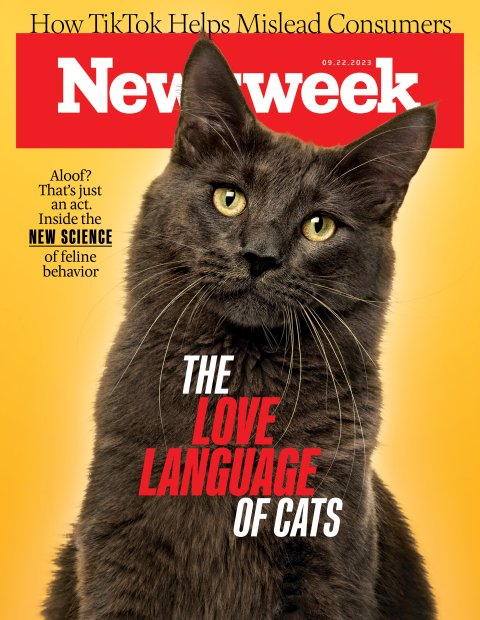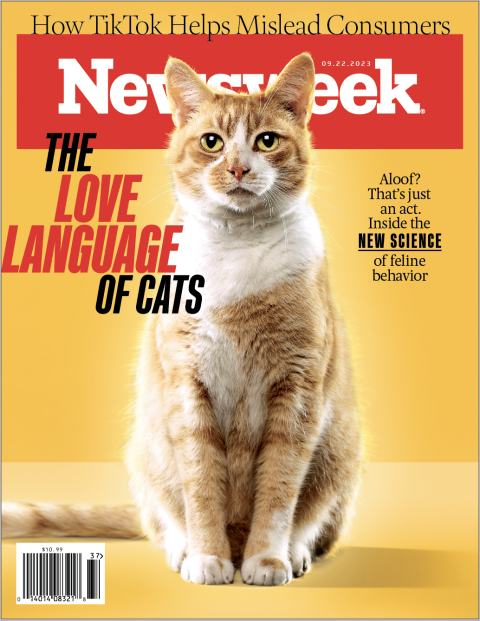As the proud owner of four housecats—Cookie, Sushi, Crumbles and Stinky—Péter Pongrácz can think of a million worthy research questions that might shed light on the mysterious inner lives of the world's second most popular species of domesticated pet. How do they feel toward humans? And what do they think of us?
It's not always easy to find graduate students with enough patience and determination to answer them. Particularly when dogs, which will do virtually anything for a little human validation or a big juicy bone, are available as alternative research subjects.
The scope of that challenge was driven home to the jovial Hungarian ethologist when he and his colleagues brought a cat into their laboratory at Eötvös Loránd University in Budapest in 2005. Within minutes of arriving, the cat disappeared into a floor-level air conditioning duct and wouldn't come out. The team spent the afternoon disassembling a laboratory wall as the animal's distraught owner's increasingly desperate calls went unheeded. It took more than a decade for Pongrácz to find a graduate student willing to try again.
"I am really interested in cats and whenever there is a possibility to do cat research, I am on it," Pongrácz says. "I always have good ideas, of course, but I am always waiting for students who would like to work with cats."
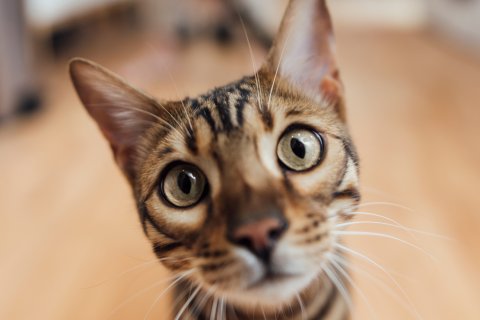
A few years ago, Pongrácz took his first tentative steps back into the field known as "cat cognition." To avoid the problem of test subjects disappearing into the laboratory air ducts, they decided to go where the cats lived. They asked owners of cats a bunch of questions—do their pets imitate the vocalizations of other cats? Do they consider their cats to be empathetic and communicative? How much did they believe their cats understood? With the survey results in hand, only then did Pongrácz dispatch graduate students to visit the cats and observe their actual behavior in their own homes.
The research, published in 2018, revealed new insights into the ability of cats to get along with their human benefactors. It turns out that cats are surprisingly adept at following a person's gaze and making inferences about their intentions. And the difference in lifestyles of indoor and outdoor cats has a big effect on their cognitive habits: indoor cats are far more interested in playing with balls and artificial objects than outdoor cats, which are more discerning.
The work is one example of a spate of research to emerge over the last five years in the field of cat cognition, a long-neglected field of animal study that, despite the obstacles posed by the often imperious and mercurial behavior of the animals it aims to study, is now taking off.
It's been a long time coming. For decades, cats took a back seat to those other animal stars of human households: dogs. The recent renaissance in cat research was inspired, in part, by early experiments on dogs in the 1990s and early aughts by Pongrácz and his colleagues at Eötvös Loránd University. Since then, labs have sprung up across the globe devoted to plumbing the minds of dogs—measuring their capacity to read and assess human emotions and signals, understand abstract ideas and social dynamics and answer other questions central to the human-canine relationships, such as whether they truly love us.
For most of that time, cat owners were out of luck. But in recent years, a promising new generation of cat lovers—many motivated by a fierce loyalty to their chosen species of pet, and the belief they have been continually and unfairly maligned—have begun borrowing experimental paradigms and drawing from lessons learned in the dog field. In the process, they are beginning to answer the kinds of questions that have long nagged at cat owners—overturning some long-held misconceptions in the process.
Far from being solitary misanthropes, many cats, we now know, are capable of complex social groupings and developing deeply meaningful attachments to their human protectors. They are also far more intelligent that many assume. Many can recognize their own names and the voices—and faces—of their owners. They are capable of understanding complex human signaling. They can learn rules and schedules, understand rudimentary human cues and draw conclusions based on limited information. Most of all, the evidence is growing that the cat-human bond is both reciprocal, real and enduring.
Cats, this evidence suggests, don't just like us. They really do love us. They're just more subtle than dogs in the way they express themselves.
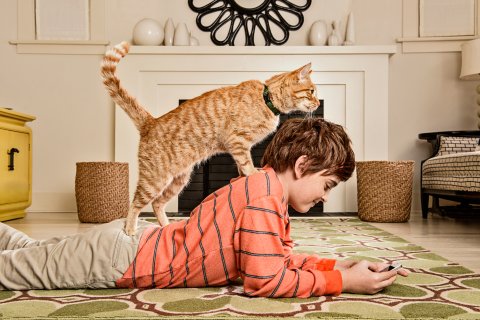
Long Time Coming
It's no mystery why we love our dogs. They overwhelm us with affection—telegraphing their delight at our very existence by leaping into our arms, licking our faces, wagging their tails and, when ignored, scrunching their eyebrows and whining like babies.
The feline-human relationship has always been more nuanced. Sure, some might tolerate a scratch behind the ears or a few minutes of heavy petting. But often cats can seem imperious and indifferent to our affections—as if they own us and we should feel grateful when they bless us with their attention. Plus, they pee on the couch when we go out of town and have been known to go to diabolical lengths to wake us up when hungry. Ever seen that YouTube video of a cat knocking a glass of water onto his sleeping owner?
Yet cats, like dogs, have been remarkably successful at penetrating the inner sanctum of human domestic life, and insinuating themselves into our families—an ability more than worthy of extensive scientific exploration. Americans spent $136.8 billion on their pets in 2022, and a large portion of that was spent on cats. Today there are roughly 220 million pet cats worldwide. of whom about 58.8 million reside in the United States. (There are roughly 471 million dogs.)
Evidence of their charisma is as old as recorded human history. About 20 years ago, archeologists uncovered a 9,500-year-old burial site on the island of Cyprus that contained the remains of a human adult buried with an 8-month-old cat, likely brought to the island by boat (cats aren't native to the island). Ancient Egyptians worshiped goddesses with both human and feline features. Scores of mummified cats and small cat sculptures have been found in the sanctuary dedicated to the feline goddess Bastet, daughter of the Sun God, in the Delta city of Bubastis. Ancient columns were decorated with cats. The Egyptians considered cats to be magical beings.
The history of cat and human coexistence dates back at least 12,000 years, says Leslie A. Lyons, a geneticist at University of Missouri's College of Veterinary Medicine, whose genetic analysis was published in the science journal Nature in November 2022. When the glaciers receded more than 10,000 years ago, humans began to grow crops in the fertile crescent between the Tigris and Euphrates Rivers and lead more sedentary lifestyles. Stores of grain and garbage attracted mice, and the mice attracted cats, which ingratiated themselves by keeping the food stores clean and disease-carrying rodents at bay.

This process helps explain why cats have developed a different kind of relationship with their human owners than dogs. Early pet dogs had to beg for food scraps, for which an ability to tug at human heartstrings became an evolutionary advantage. Hunter-gatherers began selecting them to perform other tasks, further molding their genes over millennia.
Early cats, by contrast, thrived by staying out of the way so that humans would tolerate their presence, and then hunting their own food on the periphery. To do so, they likely had to overcome evolutionary baggage that dogs didn't have. Far smaller and often more solitary, cats are far further down the food chain than dogs, and thus vulnerable to cougars, wolves, coyotes, eagles, owls, raccoons, dogs, otters and other predators. As a result, cats evolved to be far more than skittish than dogs. They're more curious, cautious and prone to flee and hide in the face of ambiguous circumstances. Which helps explain why that pet cat hightailed it into the air conditioning vents at Pongrácz's lab and refused to come out. This innate skittishness could be overcome through selective human breeding. But while humans have been breeding dogs for desired traits since the Stone Age, such efforts are far more recent for cats. And even today many consider them only "semi-domesticated."
That explains how cats have been able to stay out of trouble in the human home. But what is it that has made them such successful pets?
Baby Talk
Jonathan Losos, an evolutionary biologist at Washington University, in St. Louis, and the author of The Cat's Meow: How Cats Evolved from the Savanna to Your Sofa, attributes part of their success to their ability, like dogs, to hack our innate parental instincts.

He points to a 2009 study by British researchers who recorded the purrs of 10 different cats in different contexts, and then played them for 50 people. They were able to distinguish purrs designed to solicit food from purrs in other contexts. The solicitation of purrs peaked in the 220-to-520 hertz frequency ranges—similar to the range of a baby's cries.
"Humans are innately tuned to respond to babies, so the baby crying catches our attention that is encoded in our genes for obvious reasons," says Losos. Other research has shown that cats meow differently than their wild ancestors.
Pongrácz finds the suggestion plausible (though he thinks more research is needed). Cats have a flat face, with a short nose, and big, forward-facing eyes, which gives them a baby-like appearance. (Most livestock, by contrast, have eyes on the sides of their faces.) The average weight of an adult house cat is 8.8 lbs to 11 lbs. The average weight of a newborn baby is 7.5 lbs.
Cat lovers, of course, argue that there's more to it than that. Cats are far better at earning our affection than we give them credit for, argues Kristyn Vitale, an assistant professor in animal health and behavior at Unity Environmental University in Maine. Long perplexed by the haters who claimed her feline friends were inherently anti-social, untrainable, stubborn and mean, Vitale has spent the last decade trying to correct the misperception that cats are antisocial and inferior to dogs.
"That was never my experience with my own cats," she says.
As a 7-year-old second grader in Kent, Ohio, Vitale notes, she ate her French toast most mornings sitting on the kitchen floor next to an orange shorthair named Goldberry, who followed her wherever she went. Her black-and-gray tabby, Macy, consistently sought her out, rubbed against her and often demanded to be petted.
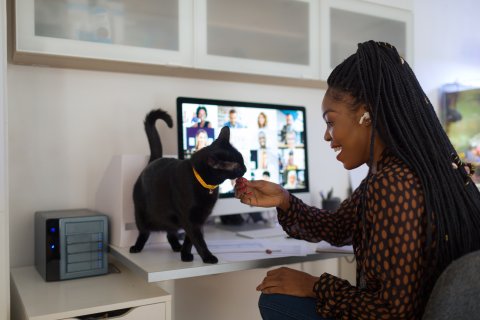
In 2014, Vitale did graduate studies in the Oregon State laboratory of Monique A.R. Udell, a prominent canine cognition researcher. She set out to disprove the notion that cats were less social than dogs using a simple approach: she measured how much time cats spend in close proximity to their owners.
"We found similar results as to what has been seen in dogs where there's just a lot of individual variation," she says. "But, in general, we do see they have the capacity to be highly social."
In a separate 2019 study, she showed that cats—just like dogs—have the capacity to form the same kind of attachment bond with human owners as seen between a human parent and child. To measure it, Vitale and her collaborators used a test known as "the secure base test." It involved placing a cat in a new room with the owner, asking the owner to leave for two minutes, and then observing the cat behavior upon their return. Just like dogs and babies, almost 66 percent of the cats demonstrated a "secure" attachment, initially exploring the room, while casting intermittent glances back at the owner for reassurance. And, upon the owner's departure, the cats exhibited distress, which quickly dissipated upon the owner's return.
In other words, cats that have formed an attachment with a human owner, just like human infants, are able to reduce anxiety and stress simply by gazing at their primary caregiver.

Attachments form during a crucial but limited developmental window. Cats that are deprived of human contact during this key period of brain development are far more resistant to human interaction. Indeed, this period is so essential to the cat-human bond that it is one of the few areas where domestication has led to lasting genetic changes, says Pongrácz. In wild species of cats, this critical developmental window lasts for about two weeks. In domesticated cats, it stays open for about two months.
What Cats Understand
The goal driving Pongrácz and his colleagues at Eötvös Loránd University during the disastrous air vent experiment in 2005 was to answer a question that most cat owners ask on a daily basis: How much do their pets understand, exactly?
To find out, the researchers drew on a well-known test from the field of human and primate developmental psychology. The test requires experimenters to hide food in one of several containers, then bring the animal into the room and guess which container has the food. To help them, researchers offer various cues, alternatively staring at, nodding toward or pointing to the correct container. The ability to complete what might appear a deceptively simple task implies something profound.
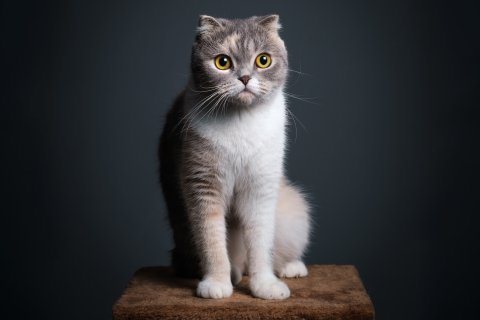
Responding correctly to the cue requires an animal to make a complex set of mental calculations—and suggests the animal understands that the person pointing is trying to help them. Human infants don't develop the capacity to follow the cue until at least 4 months, and possibly 9, and doing so is a major milestone in human communicative development. Apes and chimpanzees almost never develop this capacity without extensive training.
Finding out the answers was difficult: Even in the comfort of their own homes, when Pongrácz dispatched research teams to the homes of scores of cat owners, they faced constant frustration. In the presence of strangers, some cats froze under chairs, refused to cooperate or simply lost interest after several trials—which helped explain the long hiatus that followed.
Even so, the results of the experiment implied something profound: The cats were able to respond just as effectively to pointing cues to find the hidden food as some infants, and the only other pet that has been as successful at surviving in the human home: dogs.
In 2018, Pongrácz and his colleagues finally conducted their follow-up to this experiment—and showed that 70 percent of cats were also able to follow the human gaze to find the hidden food. (Doing so required a visit to the homes of 85 cats, 44 of whom dropped out after initially refusing to cooperate or growing bored during the experiment's 24 trials.)
"Dogs are more social and the cats have more independence and autonomy," Pongrácz says. "But against all these odds, both species really mastered the ability to live with humans."
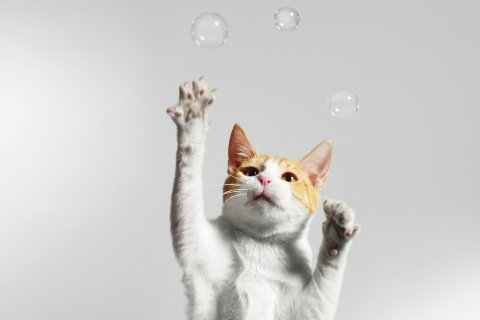
"A very basic feature of both cats and dogs is that, without any formal training, they are very quickly able to learn the main rules of that particular human family or group where they are living," he says. "When we live together, we are constantly communicating verbally and with gestures. And these animals are very attentive to us."
In recent years, the evidence that cats are socially intelligent has continued to accumulate. In a 2021 experiment, Saho Takagi, now at Kyoto University, played recordings of the owner's voice and that of a stranger, then presented the cat a photograph on a screen. When presented with incongruent pairings—such as the owner's voice followed by a photograph of the stranger, or the stranger's voice followed by a photograph of the owner—the cats looked at the screen longer, implying they carry a visual representation of their owner around in their heads.
She also played the voices of their owners from speakers located at different areas of the room—showing they were surprised by looking around or twitching the ears when the voices moved more quickly than expected. This suggests they were listening carefully and were able to "mentally map" the owner location. (These cats were also capable of jealousy, "reacting more intensely toward the soft-toy cat previously petted by their owner.")
Misunderstandings
Rejection can be hard to take, which may explain why cats can be so controversial. Often, they respond to our friendly overtures with apathy, fear or outright aggression. Indeed, many humans have been rejected by cats so many times that they have simply given up and concluded that cats don't like them or aren't worth the trouble. Why bother with these mercurial little fur balls, when dogs are standing by desperate for our attention?

Part of the reason cats get a bad rap, Vitale and other cat defenders argue, might be simple miscommunication, which can have many different causes. For one, cats don't have the facial muscles to look cute like dogs do and signal their enthusiasm for our attentions. Through thousands of years of domestication and breeding, dogs have evolved to have two to three times as many fast twitch facial muscles as wolves to allow for more greater expression, including a special muscle above their eyes that allows them to form the "puppy dog" eyes that often elicit from humans the same high-pitched voices and facial expressions they usually reserve for babies. Cats, by contrast, can't raise their eyebrows or make sad faces. Their lack of expression can lead to confusing signals, as a 2019 study found.
Canadian researchers at the University of Guelph asked 6,000 participants from 85 different countries to watch clips of cats and rate the reaction on cat faces as negative or positive. Just 13 percent of participants scored 75 percent or higher. The most successful were veterinarians and other animal experts who are around cats a lot—Vitale, who was not involved in the study, took the test and got a perfect score.
Cat signals are subtle for a reason. Most cats in nature are solitary animals, notes, says Jennifer Vonk of Oakland University in Michigan, who studies how animals think and learn. (Lions, which live in prides, are an exception.) Over the millennia, they were under less evolutionary pressure to develop the capacity for overt signaling—unlike dogs, who are often warning their fellow packmates of danger or telling them about a newly discovered source of food.
But cats do send signals: You just must know what to look for. Scientists have learned much about cat signals from studies of the social interaction of feral cats, says Mikel Delgado, a Ph.D. animal behavioralist and the co-author of Think Like a Cat. They'll use a slow blink as a reciprocal sign of relaxation and friendliness. Cats that are friendly toward one another also often lick and groom one another and rub their cheeks and foreheads on them. When a pet cat rubs its forehead on a person's arm, it generally means acceptance into the cat's social circle.

When cats place their tail up while approaching another cat, he says, it generally means, "I come in peace." Cats often interpret direct eye contact and staring as a threat, to which they respond by hissing, growling and making their body smaller by tucking their ears back and tails in.
Although cats often seem disengaged and aloof, scientists have found that they actually pay close attention to their owners. In 2019, Atsuko Saito, a biologist at Sophia University in Tokyo, played 78 cats recordings of their owners' voices reciting a variety of nouns, other cat names and finally the name of the cat itself.
She then repeated this procedure with recordings from a stranger. Sure enough, when they first heard their owner's voice, many of the cats moved their heads and twitched their ears or tails. Of the cats that reacted, most lost interest when the words were repeated. But their ears pricked up again upon mention of their names, which suggests that cats can recognize their owners' voices and some familiar words, even though they don't understand the meaning.
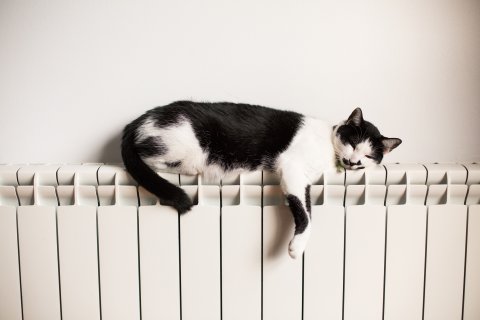
Cats also pay attention to the intonation of human speech. When Charlotte de Mouzon and her colleagues at Paris Nanterre University recorded humans talking to their cats, she noticed that many talked to their cats as if they were babies. So she asked owners to speak in both the high-pitched baby voice and normally, and then recorded strangers doing the same. The reactions of the cats were so subtle, she did not notice them until she studied the videotape. When the cats heard their owners speak in a high-pitched voice, they responded more, by moving their ears and tails, looking around or freezing. The voice of the strangers had no such effect.
Meeting Cats Halfway
There's no denying that many cats can be fussy. But as in any significant relationship, we could solve many problems by putting ourselves in the shoes of our feline friends. As the new science suggests, cats care about us. They just have their own unique way of showing it.
Sometimes they just need a little space. For instance, compared to dogs, cats generally prefer "low intensity" but more frequent social interactions, as opposed to marathon cuddling sessions, says Delgado. Many humans also insist on petting in them in areas below the neck that they find uncomfortable.
"Research has shown that an interaction between a cat and a human is more positive and lasts longer when you let the cat approach you instead of approaching the cat. Most people go into an interaction with a cat thinking, 'I love cats, therefore I'm going to pick up the cat.' Cats are control freaks. They want to call the shots. They want to feel like they have the ability to walk away or escape when they want to."

Cats, it turns out, also have different motivations than dogs when it comes to food. Sure, they appreciate a good meal, but just because you feed them doesn't mean they want you as a friend. Cats tend to be occasional grazers—preferring to eat their food gradually, store it and come back to it later, just like they would a piece of prey captured in the field. Since they are not "food motivated," they generally can't be trained, like dogs, with treats.
That doesn't mean cats are a lost cause, says Vitale. Under the right conditions, they are just as trainable as dogs. "This whole idea that cats are untrainable is just a myth," she says.
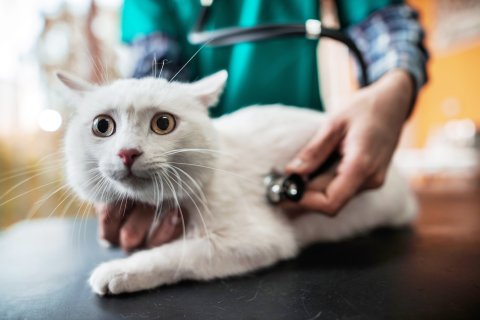
To prove it, Vitale placed 55 cats, (23 pets and 22 from shelters) in solitary confinement for two and a half hours, and then offered them a choice between food, a toy, a preferred scent such as a gerbil or catnip and human interaction such as petting, playing or baby talk. Placed in the middle of a cross, with each option the same distance away, available for the choosing, 38 of the cats made a choice. Nineteen, about 50 percent, opted for the human interaction most of the time. Fourteen, or roughly 37 percent, chose the food, four chose the toys and one picked the scent.
Once she figured out each cat's preferred reward, she was able to train them to sit, jump through hoops, fetch a ball—pretty much anything a dog can do. She published the study in 2017 in the journal, Behavioural Processes.
In 2020, Fumi Higaki, a dog trainer and pet store owner in Ichinomiya, Japan,made worldwide headlines by showing an 11-year-old female cat named Ebisu (after the Japanese god of prosperity) that could open a plastic drawer, bite a rubber string and touch a box with her paw on command.
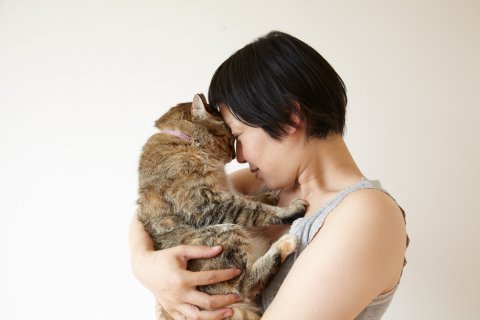
Such findings are exhilarating for cat-loving scientists like Pongrácz. In the years ahead, he is looking forward to studies comparing domesticated cats to the behavior of their closest nondomesticated relatives, as well as new experiments that might help explain why certain cats get along with one another in group living situations and others fail to fit in. But those are just a couple of the questions he's interested in.
Thankfully, in the years ahead, there's reason to believe there will be plenty of feline-friendly graduate students willing to help him answer them.
Correction (9/21/2023): A previous version of this article mentioned Unity College in Maine. However, the school announced in February that it was beginning the process of changing its name, in a rollout to be completed in early 2024. Newsweek has modified this article to reflect the new name, Unity Environmental University.
Do you have funny and adorable videos or pictures of your pet you want to share? Send them to life@newsweek.com with some details about your best friend and they could appear in our Pet of the Week lineup.
